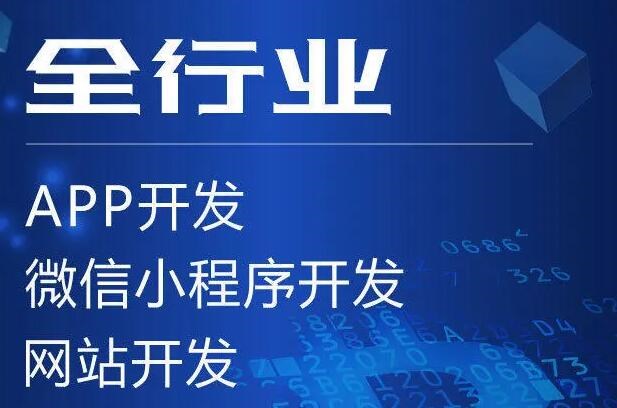中文化、本土化、云端化的在线跨平台软件开发工具,支持APP、电脑端、小程序、IOS免签等等
随着科技的快速发展,移动互联网已经成为了人们日常生活中不可或缺的一部分。而移动应用开发也成为了一个热门的领域,许多人都想加入这个行业,但是又担心自己没有编程基础或无法掌握复杂的开发流程。但实际上,移动应用开发并不像想象中那么难,门槛相对较低,下面我将从几个方面介绍移动应用开发的门槛低的原因。
1.开发工具易学易用
移动应用开发的首要步骤是选择开发工具。现在市场上有很多种开发工具可供选择,例如Android Studio、Xcode、React Native和Flutter等等。这些工具都具有较好的易用性和友好的用户界面,可以让开发者快速上手。
以Flutter为例,它是由谷歌推出的一种UI开发框架,使用Dart语言进行开发,与其他框架相比,Flutter具有以下优点:
- 框架易学易用:Flutter具有良好的文档、动态的社区和友好的界面设计,可以让初学者很快上手。
- 快速开发:Flutter可以在短时间内设计出漂亮的UI界面,并且快速迭代。
- 跨平台:Flutter支持iOS和Android平台,并且提供了一些特殊适配。
2.代码简单易懂
移动应用开发还需要编写代码,但是相比于其他编程领域,移动应用开发的代码量相对较小,在代码书写和阅读上也相对简单。此外,移动应用本身的复杂度也比较低,使得开发人员可以将精力集中在业务逻辑的实现上。
例如,以下是使用Flutter实现的一个简单的计数器:
```dart
import 'package:flutter/material.dart';
void main() => runApp(MyApp());
class MyApp extends StatelessWidget {
// This widget is the root of your application.
@override
Widget build(BuildContext context) {
return MaterialApp(
title: 'Flutter Demo',
theme: ThemeData(
// This is the theme of your application.
//
// Try running your application with "flutter run". You'll see the
// application has a blue toolbar. Then, without quitting the app, try
// changing the primarySwatch below to Colors.green and then invoke
// "hot reload" (press "r" in the console where you ran "flutter run",
// or simply save your changes to "hot reload" in a Flutter IDE).
// Notice that the counter didn't reset back to zero; the application
// is not restarted.
primarySwatch: Colors.blue,
),
home: MyHomePage(title: 'Flutter Demo Home Page'),
);
}
}
class MyHomePage extends StatefulWidget {
MyHomePage({Key key, this.title}) : super(key: key);
// This widget is the home page of your application. It is stateful, meaning
// that it has a State object (defined below) that contains fields that affect
// how it looks.
// This class is the configuration for the state. It holds the values (in this
// case the title) provided by the parent (in this case the App widget) and
// used by the build method of the State. Fields in a Widget subclass are
// always marked "final".
final String title;
@override
_MyHomePageState createState() => _MyHomePageState();
}
class _MyHomePageState extends State
int _counter = 0;
void _incrementCounter() {
setState(() {
// This call to setState tells the Flutter framework that something has
// changed in this State, which causes it to rerun the build method below
// so that the display can reflect the updated values. If we changed
// _counter without calling setState(), then the build method would not be
// called again, and so nothing would appear to happen.
_counter++;
});
}
@override
Widget build(BuildContext context) {
// This method is rerun every time setState is called, for instance as done
// by the _incrementCounter method above.
//
// The Flutter framework has been optimized to make rerunning build methods
// fast, so that you can just rebuild anything that needs updating rather
// than having to individually change instances of widgets.
return Scaffold(
appBar: AppBar(
// Here we take the value from the MyHomePage object that was created by
// the App.build method, and use it to set our appbar title.
title: Text(widget.title),
),
body: Center(
// Center is a layout widget. It takes a single child and positions it
// in the middle of the parent.
child: Column(
// Column is also a layout widget. It takes a list of children and
// arranges them vertically. By default, it sizes itself to fit its
// children horizontally, and tries to be as tall as its parent.
//
// Invoke "debug painting" (press "p" in the console, choose the
// "Toggle Debug Paint" action from the Flutter Inspector in Android
// Studio, or the "Toggle Debug Paint" command in Visual Studio Code)
// to see the wireframe for each widget.
//
// Column has various properties to control how it sizes itself and
// how it positions its children. Here we use mainAxisAlignment to
// center the children vertically; the main axis here is the vertical
// axis because Columns are vertical (the cross axis would be
// horizontal).
mainAxisAlignment: MainAxisAlignment.center,
children:
Text(
'You have pushed the button this many times:',
),
Text(
'$_counter',
style: Theme.of(context).textTheme.headline4,
),
],
),
),
floatingActionButton: FloatingActionButton(
onPressed: _incrementCounter,
tooltip: 'Increment',
child: Icon(Icons.add),
), // This trailing comma makes auto-formatting nicer for build methods.
);
}
}
```
代码中注释非常详细,可以让初学者很快上手。在Widget的状态改变后,Flutter会自动更新UI,无需手动刷新,极其方便。
3.丰富的网络资源
移动应用开发有很多教程和社区资源,开发人员可以很方便地获取和学习相关知识。例如,国外有Stack Overflow、GitHub等知名社区,国内有CSDN、掘金等优秀的开发社区,可以提供开发人员所需要的各种资源和经验。
此外,现在市场上有很多在线学习平台,如腾哥云课堂、慕课网、网易云课堂等等,它们提供了大量的教程和实践案例,可以帮助开发者快速掌握相关开发技能。
综上,移动应用开发的门槛低,除了开发工具易学易用、代码简单易懂等因素外,还有丰富的网络资源可供参考。如果你想加入这个行业,只需要一部电脑,一些学习的耐心和时间,就能很快掌握相关技能。





